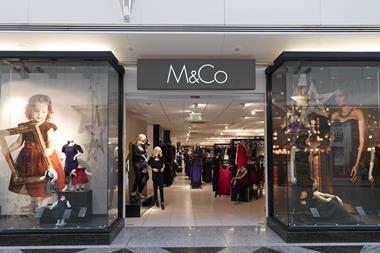While Steve Rowe is expected to unveil his long-term strategy in November, he is accelerating the process of bringing M&S back into style.

In order to run a simpler and effective organisation, M&S is to formally consult on a net reduction of 525 roles at its head office. Rowe believes the removal of duplication will not only deliver cost savings, but will help build a “different” type of M&S – one more responsive and capable in serving its customers.
However, it would be too easy to believe that it’s only the retailer’s organisational structure holding performance back.
Clothing sales have been plummeting – M&S posted its worst fall in like-for-like sales in a decade, of 8.9% for the 13 weeks to July 2 – so Rowe will also need to address the underlying issues deterring customers from its clothing collections in the first place.
That is pivotal, against the backdrop of volatility in UK retail sales over the past 12 months or so, hindered by volatile weather and sluggish real wage growth. Women’s fashion sales have been particularly affected.
Off target
One of M&S’s biggest weaknesses is an apparent inability to understand who its target customer is, confusing its core shoppers with disjointed advertising campaigns and clothing collections as a result.
Over the past few years, M&S has flitted through one collaboration and celebrity partnership after another, from Twiggy to Alexa Chung.
“Instead of constantly trying to bring something completely new to its customers in an attempt to fight for revenue, M&S might instead have benefited from understanding what actually works”
However, instead of constantly trying to bring something completely new to its customers in an attempt to fight for revenue, M&S might instead have benefited from understanding what actually works and generates sales as a result of these campaigns and collections – understanding what its customer actually wants.
Nevertheless, M&S’s buying structure has changed from branded to category buying, which should ensure a more refined and consistent range – and another opportunity to remove duplication.
Not only will this allow M&S to eradicate the dead wood in its collections – which will have damaged margins through heavy markdown costs – it will also allow the retailer to gain clearer overall analysis of what styles, sizes, price points and colours its customers want and don’t, enhancing range development for future collections.
The long game
However, despite the change to the structure earlier this year, M&S’s high dependency on long lead-time suppliers outside the UK means such changes aren’t likely to materialise until its spring/summer 2017 range starts to launch in-store, around January next year.
Despite structural shifts, the retailer also needs to appreciate that it is not driving a fast-fashion, volume driven chain and must understand how its core 40+ customer base shops, with shopping frequency lower than the younger customers who are more commonly driven to fashion-forward players such as Asos.
Therefore, M&S would again benefit from understanding who its customer is, merchandising stock builds based on pragmatic sales forecasts to ensure it can capitalise on full-price sales, reducing the risk of discounting damaging total revenues.
“Despite M&S’s deflated performance illustrating the urgent need for improvement, Rowe needs to be careful not to overwhelm the business with change”
And, if the speculation is correct and M&S ends up closing stores, it may also need to overhaul stock levels.
Additionally, while M&S was once an attractive destination for customers trading up, investing in quality tailoring and classic staples, M&S has also faltered against the intensified competition on the high street as international retailers, such as Cos and Anthropologie, continue to expand and gain momentum among British customers.
Despite Marks & Spencer’s deflated performance illustrating the urgent need for improvement, Rowe needs to be careful not to overwhelm the business with change.
While there is no denying a fashion overhaul is needed, Rowe should not be tempted to try to do too much at once – that’s part of what has gone wrong in the past.
- Rebecca Marks is a senior analyst at Retail Week Prospect
Want stories like this in your inbox?
Sign up to the Retail Week daily emails and get the biggest retail headlines each morning. Manage your newsletter preferences here: retail-week.com/newsletters


























No comments yet